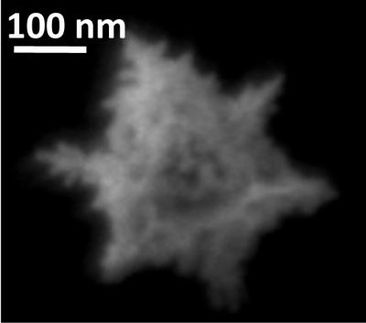The longest carbon nanotubes you've ever seen
Crafted with breakthrough manufacturing technique, centimeter-long fibers are visible to the naked eye
Using techniques that could revolutionize manufacturing for certain materials, researchers have grown carbon nanotubes that are the longest in the world. While still slightly less than 2 centimeters long, each nanotube is 900,000 times longer than its diameter.
The fibers - which have the potential to be longer, stronger and better conductors of electricity than copper and many other materials - could ultimately find use in smart fabrics, sensors and a host of other applications.
To grow the aligned bundles of tiny tubes, the researchers combined advantages of chemical vapor deposition (CVD), a technique for creating thin coatings that is especially common in the semiconductor industry, with a novel substrate and catalyst onto which the carbon attaches. Supported by the National Science Foundation (NSF) and the Office of Naval Research, University of Cincinnati (UC) professors Vesselin Shanov and Mark Schulz collaborated with post-doctoral researcher Yun Yeo Heung and students to develop the technique.
The researchers partnered with First Nano, a division of CVD Equipment Corp. of Ronkonkoma, N.Y., to use their laboratory and a specialized furnace. With the equipment, the researchers were able to break apart hydrocarbons to create a vapor of carbon-atom starting material. Within the vapor sat the new substrate - a catalyst made of alternating metal and ceramic layers atop an oxidized-silicon wafer base - which served as the foundation for growth.
"This process is revolutionary because it allows us to keep the catalyst 'alive' for a long period of time thus, providing fast and continuous transport of the carbon 'building blocks' to the carbon nanotube growth zone," said Shanov.
The carbon nanotubes are extremely long compared to predecessors - the longest is 3 millimeters beyond the prior world record. More important for manufacturing, the research team grew a 12-millimeters-thick, uniform carpet of aligned carbon nanotubes on a roughly 10-centimeter silicon substrate, opening the door for scaling-up the process.
Most read news

Get the analytics and lab tech industry in your inbox
By submitting this form you agree that LUMITOS AG will send you the newsletter(s) selected above by email. Your data will not be passed on to third parties. Your data will be stored and processed in accordance with our data protection regulations. LUMITOS may contact you by email for the purpose of advertising or market and opinion surveys. You can revoke your consent at any time without giving reasons to LUMITOS AG, Ernst-Augustin-Str. 2, 12489 Berlin, Germany or by e-mail at revoke@lumitos.com with effect for the future. In addition, each email contains a link to unsubscribe from the corresponding newsletter.























































